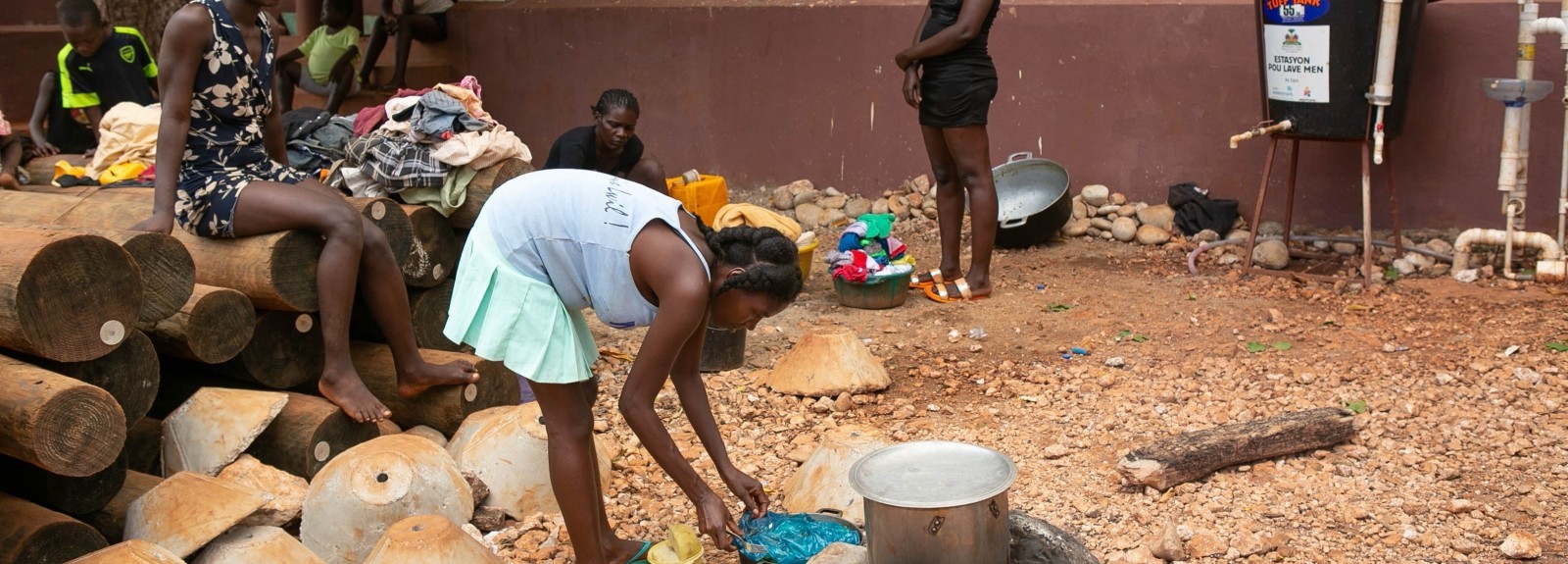Haiti is still reeling from the effects of the August 2021 earthquake, a devastating blow to a country already dealing with too much. Last month our Chief Humanitarian Officer, Tamara Demuria, visited the embattled country. Here's what she saw – through the eyes of a humanitarian.
***
"Earthquake, again! This can't be possible!"
That was my immediate reaction upon receiving a phone alert that a 7.2 magnitude earthquake devastated Haiti's South and Southwest. Like many, I had flashbacks to 2010's tragic quake: the destruction and devastation, people in the streets, some buried in the rubble fighting for their lives and others looking for their lost loved ones, trying not to lose hope.
I spent five years in Haiti after the 2010 earthquake and in that time, I came to realize how deeply rooted the issues of social injustice poverty, corruption and climate change truly are. And yet there I was, in August 2021, returning to see that not much had changed at all. In many ways, things have worsened, driving a humanitarian crisis so dire it has driven tens of thousands of Haitians to risk their lives to flee, in hopes of finding safety and security.
Roseziana Bernard, 36, stands with four of her seven children in the remnants of her home in a rural mountain area to the southeast of the fishing village of Corail in the Grand'Anse department of Haiti, August 24, 2021. (Allison Shelley for LWR)
The devastating aftermath of the earthquake
This time around, the earthquake spared the capital city of Port-au-Prince, but wiped out most of the remote communities in the Southern Department and severely damaged those in Grand Anse and Nippes departments. There, the quake flattened buildings beyond any possible repairs and pushed big blocks of cement into roads strewn with wooden planks, personal belongings, kids' shoes – and people, out in the open air crying and begging for help.
Standing in the midst of it all, a feeling of helplessness overtook me. I knew the resources needed to help people get back on their feet would be scarce. It's one of the biggest challenges we humanitarians face during such rapid onset disasters – the availability of flexible resources that allow us to reach people quickly with the things they truly need. That's one reason we are thankful for your cash donations. They give us what we need to spring into action.
And that's just what our team has been doing – putting your love to work reaching neighbors despite a fuel shortage, a scarcity of vehicles to rent and cut-off communities with limited or no access for helpers like us.
A man carries part of a load of coconut seedlings across a crippled suspension bridge, a critical link across the Grand'Anse River between the city of Jeremie and the entire eastern side of the island, including the capital of Port-au-Prince, August 2021
Rolling up our sleeves and getting to work
Our very first task was assessing the damage and needs, and it was not easy. The main bridge connecting the Grand'Anse department to the rest of the country was severely damaged, cutting off an important travel artery for livelihood, commerce and family.
As we crossed the bridge, we had to keep the vehicles on both ends of the bridge (so as not to put too much weight on the already unstable and unsafe structure) and we crossed it by foot, risking our lives together with the hundreds of people trying to sustain their livelihoods and moving wheelbarrows full of food and other supplies.
Heightened insecurity and gangs operating in the communities made it even harder to reach people in need. Paralyzed after the recent assassination of Haiti's President, the country's economy was on the verge of collapsing extreme poverty, vulnerability, corruption and insecurity tear it apart.
I understand how Haiti's challenges might make those trying to help feel weary. However, as I look into the eyes of women and girls who simply want a safe space to spend the night, a meal for their hungry children, or access to basic medical care, how could I do anything but help?
Young women pose for a photo in front of their makeshift dwellings, tent-sized shelters made of tarps and wood, along the side of the road near Chambellan, in the Grand'Anse department of Haiti. (Allison Shelley for LWR/Corus)
I have hope for Haiti
Haiti's challenges are deeply rooted in its colonial history, and are made worse by regular stressors like earthquakes, coup attempts, hurricanes and insecurity. The problems are immense, and none of them are easily solved.
And yet I truly believe Haiti's hope and resilience may best be underscored by the Creole proverb: "Piti, piti, wazo fen nich li" ("Little by little the bird builds its nest"). Every chance my colleagues and I get to offer your love and care – in the form of cash donations, non-food items such as tarps, hygiene kits, water purification tablets, quilts and so much more – I feel we are building back Haiti, bit by bit.
As a humanitarian – as a human – I want to say thank you. Thank you for your humanitarian spirit and standing by people in need in such hard times. Your love and care do not go unnoticed. In fact, it saves lives and protects thousands of neighbors from falling into even more dire conditions. Thank you.


